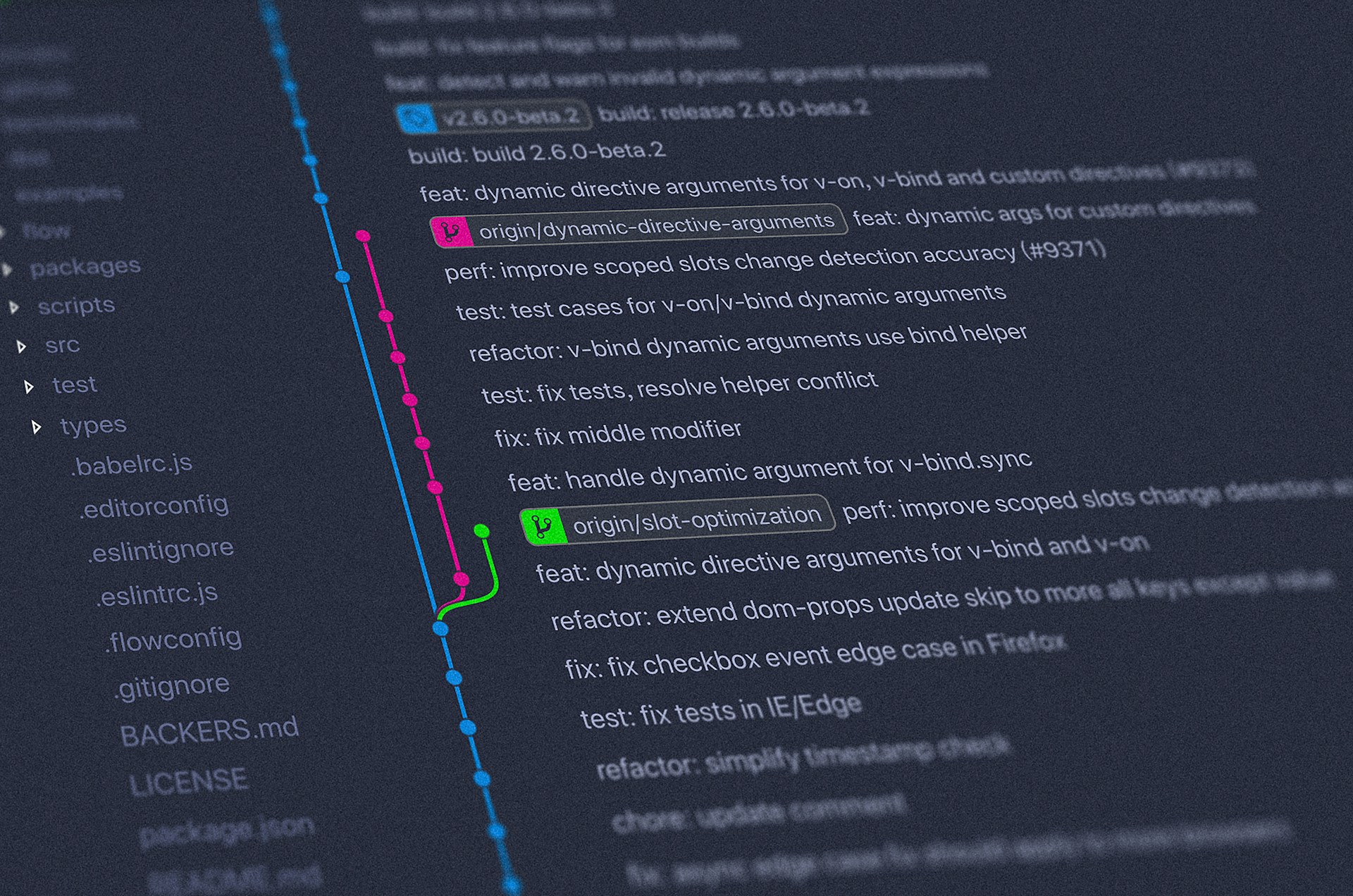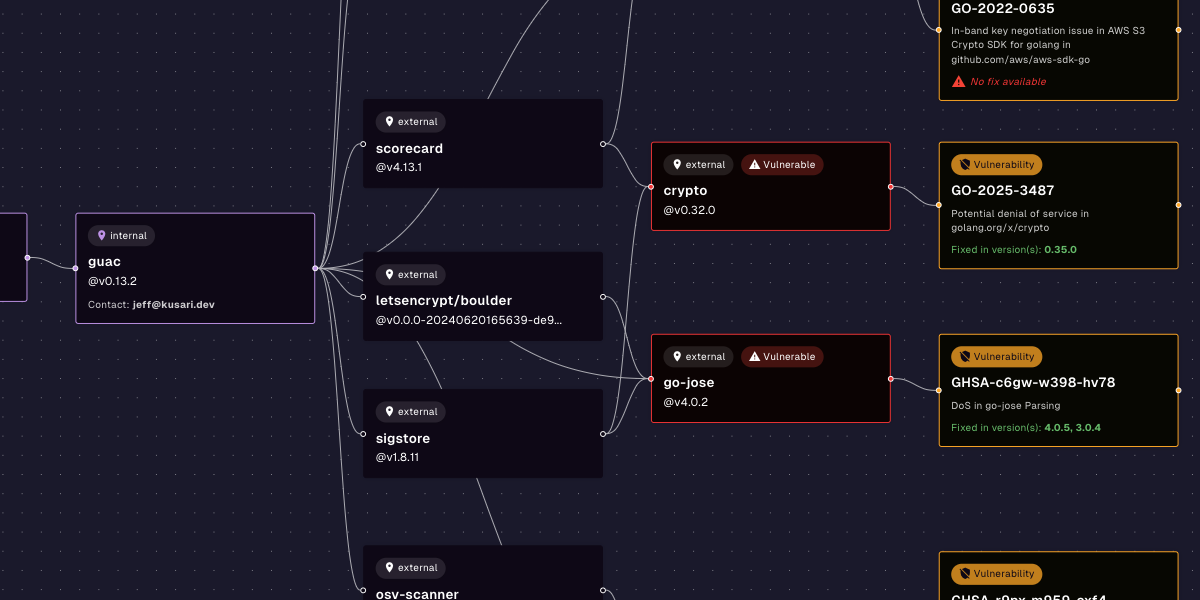Stop Merging Risky Code: Secure Pull Requests with Automated Security Checks
Implementing secure pull requests has become essential to prevent security vulnerabilities from making their way into the codebase.
June 23, 2025

Software development teams face a constant battle between shipping code quickly and ensuring it's secure. This tension is particularly evident during the pull request process - a critical juncture where insecure code can slip into your production environment if proper security measures aren't in place. Implementing secure pull requests has become essential for organizations looking to prevent security vulnerabilities from making their way into the codebase.
What Makes Pull Requests Vulnerable? Understanding the Security Risks
Pull requests represent a critical control point in your development pipeline. They serve as the final review gateway before code gets merged into your main codebase. However, without proper security guardrails, pull requests can become a vulnerability vector for several reasons:
- Insufficient code review practices focusing only on functionality
- Manual security reviews that are inconsistent or missed due to time pressures
- Lack of automated security scanning integrated into the workflow
- Inadequate attention to third-party dependencies and their security implications
- Pressure to merge quickly to meet deadlines, bypassing security checks
The consequences of merging vulnerable code can be severe - from data breaches and service disruptions to compliance violations. A single missed security flaw in a pull request can lead to costly incidents that impact both your business reputation and bottom line.
How Secure Pull Requests Transform Your Development Workflow
Implementing secure pull requests fundamentally changes how code makes its way into production. This approach shifts security from an afterthought to a core element of the development process by:
Automating Security Validations
Rather than relying on manual code reviews that might miss security issues, automated security checks run consistently on every pull request. These tools examine the code for known vulnerabilities, insecure patterns, and potential risks before a human reviewer even begins their assessment.
Enforcing Security Standards
With proper tooling, you can enforce security standards by blocking merges when critical security issues are detected. This ensures that your security requirements aren't just guidelines that can be ignored under pressure but enforced rules that protect your codebase.
Educating Developers in Real-Time
When security issues are flagged during the pull request process, developers receive immediate feedback. This creates a continuous learning opportunity that helps teams improve their security awareness and coding practices over time.
The transformation to secure pull requests doesn't happen overnight, but implementing the right tools and processes can significantly reduce your risk of security incidents while maintaining development velocity.
Essential Components of Secure Pull Requests
Creating truly secure pull requests requires several components working together. Each plays a unique role in identifying and mitigating security risks before code makes it to production:
Static Code Analysis
Static code analysis tools examine your code without executing it, identifying potential security vulnerabilities, bugs, and code quality issues. These tools can detect many common security problems:
- Buffer overflows and memory leaks
- SQL injection vulnerabilities
- Cross-site scripting (XSS) opportunities
- Insecure cryptographic implementations
- Hard-coded credentials and other sensitive information
Integrating static analysis into your pull request workflow provides an automated first line of defense against common security issues before human reviewers become involved.
Security Vulnerability Detection
Beyond code analysis, comprehensive security vulnerability detection tools scan your dependencies for known vulnerabilities. Many security breaches occur not because of flaws in custom code but due to vulnerabilities in the open-source components and libraries your application relies on.
Modern detection tools can:
- Scan your dependency manifests (like package.json or requirements.txt)
- Check dependencies against vulnerability databases
- Prioritize findings based on severity and exploitability
- Recommend fixes or version upgrades to resolve issues
Branch Protection Rules
Branch protection rules enforce security policies at the repository level. These configurations prevent direct pushes to protected branches and ensure that all code changes undergo proper review and security validation before merging.
Effective branch protection typically includes:
- Requiring a minimum number of approving reviews
- Mandating successful status checks (including security scans)
- Preventing force pushes that could bypass security controls
- Restricting who can dismiss review requests
These rules create a security foundation that's difficult to circumvent, even when teams are under pressure to deploy quickly.
Ready to secure your pull requests?
Kusari helps development teams implement automated security checks in their pull request workflows without slowing down development.
Our platform integrates directly with GitHub to analyze code changes, detect vulnerabilities, and provide clear remediation guidance—all within the PR interface developers already use.
Request a demo today to see how Kusari can strengthen your software supply chain security with minimal disruption to your development workflow.
Implementing Security Checks in Pull Requests
Adding security validation to your secure pull requests workflow requires both tools and process changes. Here's how to implement these checks effectively:
Choosing the Right Security Tools
The security tooling landscape is vast, so selecting tools that match your technology stack and security requirements is crucial. Consider these factors when choosing security tools for your pull request process:
- Language and framework compatibility
- Integration capabilities with your version control system
- False positive rate and accuracy
- Performance impact on CI/CD pipelines
- Ease of configuration and customization
Many teams implement a combination of specialized tools rather than relying on a single solution to catch different types of security issues.
Setting Up Security Automation
Security automation is the key to consistent application of security checks. Without automation, security reviews become inconsistent and vulnerable to human error or oversight. Implementing automated checks typically involves:
- Configuring security scanning tools to run automatically on pull request creation
- Setting appropriate severity thresholds for blocking vs. warning issues
- Ensuring scan results are visible to developers in the pull request interface
- Creating a feedback loop where developers can quickly address identified issues
The goal is to make security scanning a seamless part of the development workflow rather than a bottleneck or an afterthought.
Integrating with CI/CD Pipelines
Your secure pull requests should be integrated with your continuous integration and deployment pipelines. This integration ensures that security checks are performed consistently and automatically whenever code changes are proposed.
A well-integrated security workflow might include:
- Pre-commit hooks that catch obvious issues before they enter the pull request
- Automated scans that trigger when pull requests are created or updated
- Security validation as a required step before deployment can proceed
- Historical tracking of security metrics to measure improvement over time
The more seamlessly security is integrated into your existing processes, the less resistance you'll face from development teams.
GitHub Pull Requests: Security Best Practices
As the most widely used platform for code collaboration, GitHub pull requests deserve special attention when implementing security controls. Here are best practices for securing pull requests in GitHub:
Leveraging GitHub's Native Security Features
GitHub provides several built-in security features that can enhance your pull request security:
- Code scanning with CodeQL: GitHub's semantic code analysis engine that can identify vulnerabilities across multiple languages
- Dependency scanning: Automatically checks dependencies for known vulnerabilities
- Secret scanning: Identifies tokens, private keys, and other secrets accidentally committed to the repository
- Security advisories: Private collaboration space to discuss and fix vulnerabilities
These features form a solid foundation for secure pull requests that many teams can implement with minimal configuration.
Setting Up Required Status Checks
GitHub's required status checks feature ensures that certain conditions must be met before a pull request can be merged. For security purposes, you can:
- Configure security scans as required checks
- Prevent merging until all security issues are resolved
- Require approval from security team members for certain types of changes
- Set up dependency updates to automatically create pull requests with security fixes
By making security checks mandatory rather than optional, you create a development culture where security isn't bypassed even under deadline pressure.
Security Integration in GitHub
Beyond GitHub's native offerings, security integration in GitHub can be extended through marketplace apps and custom integrations. These tools can provide specialized security capabilities like:
- Advanced vulnerability detection for specific frameworks
- Container image scanning for Docker-based applications
- Infrastructure-as-code security validation
- Compliance checking against industry standards
The GitHub ecosystem allows you to create a customized security workflow that addresses your specific risk profile while maintaining the convenience of integrated tooling.
Pull Request Security Workflow: Creating a Repeatable Process
A consistent pull request security workflow ensures that security isn't treated as an optional step but is embedded into how teams work. Here's how to create an effective security workflow:
Defining Security Requirements
Before implementing technical controls, clearly define what constitutes acceptable security for your codebase. This typically includes:
- Categorizing security issues by severity (critical, high, medium, low)
- Determining which severity levels block merging vs. generate warnings
- Setting standards for different types of applications (customer-facing vs. internal)
- Establishing exception processes for legitimate false positives
These requirements should be documented and accessible to all developers so expectations are clear.
Training Developers on Security Best Practices
Tools alone won't create secure pull requests - developers need to understand security principles and practices. Consider implementing:
- Security training focused on your specific technology stack
- Regular security brown-bag sessions to discuss recent vulnerabilities
- Recognition for developers who proactively address security issues
- Security champions within development teams who help others with security questions
The more knowledge developers have about security, the fewer issues will make it into pull requests in the first place.
Handling Security Exceptions
There will always be situations where security findings need to be addressed through means other than immediate code changes. Your workflow should account for these exceptions:
- Create a clear process for documenting accepted risks
- Require appropriate approval levels based on risk severity
- Set expiration dates for exceptions to ensure they're revisited
- Track exceptions centrally to maintain visibility of your security posture
Without a formal exception process, teams might resort to bypassing security controls entirely when they encounter legitimate false positives or issues that can't be immediately fixed.
Security Checks in Pull Requests: What to Look For
Not all security checks are equally valuable. Focus your security checks in pull requests on these high-impact areas:
Code-Level Vulnerabilities
These vulnerabilities exist in the custom code written by your developers:
- Input validation issues that could lead to injection attacks
- Improper authentication and authorization checks
- Insecure cryptographic implementations
- Race conditions and concurrency problems
- Insecure direct object references
Detecting these issues typically requires a combination of static analysis tools and security-focused code review.
Dependency Vulnerabilities
Many security breaches occur through vulnerabilities in dependencies rather than custom code:
- Known vulnerabilities in third-party libraries
- Outdated dependencies with security patches available
- Transitive dependencies that introduce unexpected vulnerabilities
- Dependencies from untrusted sources
Automated dependency scanning in your secure pull requests workflow can identify these issues before they impact your application.
Secrets and Sensitive Data
Secrets management in pull request workflows is crucial to prevent accidental exposure of sensitive information:
- API keys and access tokens
- Database credentials
- Private encryption keys
- Personal identifiable information (PII)
- Internal URLs and IP addresses
Secret scanning tools can detect when this information is accidentally included in commits, allowing developers to remove it before it becomes part of your permanent history.
Configuration and Infrastructure Risks
Modern applications often include infrastructure-as-code and configuration files that can introduce security risks:
- Overly permissive network access rules
- Disabled security features in configuration files
- Insecure default settings
- Missing encryption for sensitive data stores
Specialized scanning tools can review these files as part of your pull request process to catch misconfigurations before deployment.
Automating Your Pull Request Security Workflow
Manual security reviews don't scale as your codebase and team grow. Security workflow automation is essential for maintaining consistent security without creating bottlenecks:
Setting Up Automated Security Gates
Security gates are automated checkpoints that code must pass before proceeding to the next stage of your pipeline:
- Pre-commit gates that run quick checks before code is pushed
- Pull request gates that run comprehensive security scans
- Pre-deployment gates that perform final validation before release
These gates ensure that security requirements are enforced consistently without relying on human vigilance.
Balancing Security and Developer Experience
Security automation needs to find the right balance between protection and developer productivity:
- Configure scans to run in parallel to minimize waiting time
- Provide clear, actionable feedback when issues are found
- Implement security self-service tools that developers can run locally
- Continuously tune false positive rates to maintain trust in the system
When security automation creates too much friction, developers may look for ways to bypass it. A good system catches real issues without becoming an obstacle to productive work.
Tools That Enable Secure Pull Requests
Several tools can help you implement secure pull requests with minimal effort:
Kusari Inspector
Kusari Inspector automatically analyzes pull requests for security vulnerabilities, checking both your code and dependencies for potential risks. It integrates directly with GitHub and provides clear security feedback directly in the pull request interface. Your code stays in your repos—we never store it.
Other Security Tools
- SonarQube and SonarCloud for code quality and security analysis
- Snyk and Dependabot for dependency vulnerability scanning
- GitGuardian and TruffleHog for secrets detection
- Checkov and tfsec for infrastructure-as-code security
The key is selecting tools that integrate smoothly with your existing workflow and provide valuable insights without overwhelming your teams with false positives.
Measuring the Effectiveness of Your Secure Pull Requests
How do you know if your secure pull requests strategy is actually improving your security posture? Measurement is essential:
Security Metrics to Track
These metrics can help you gauge the effectiveness of your security program:
- Vulnerability escape rate: How many vulnerabilities make it to production despite your controls
- Mean time to remediation: How quickly teams address identified security issues
- Security debt: The accumulation of known but unaddressed security issues
- Pull request rejection rate: The percentage of PRs rejected for security reasons
- Security coverage: What percentage of your codebase is being actively scanned
Tracking these metrics over time helps you identify trends and areas for improvement in your security process.
Continuous Improvement
Security isn't a one-time implementation but a continuous process of improvement:
- Regularly review security findings to identify common patterns
- Update security tools and rules based on emerging threats
- Collect feedback from development teams on the security process
- Conduct periodic reviews of your security requirements and thresholds
Each cycle of improvement should make your secure pull requests more effective at catching real issues while reducing false positives and friction.
Secure Pull Requests: Streamlining Development Without Compromising Security
Implementing secure pull requests doesn't have to mean slowing down development. With the right approach, security becomes an enabler rather than a bottleneck:
Shift-Left Security Approach
The "shift-left" approach moves security earlier in the development process:
- Provide developers with security tools they can run locally
- Include security requirements in feature planning
- Automate security testing as early as possible
- Create security-focused templates for common development tasks
By addressing security from the beginning, you reduce the need for major changes during the pull request stage.
Creating a Security-First Culture
Beyond tools and processes, successful secure pull requests require a culture that values security:
- Recognize and reward security-conscious behavior
- Include security considerations in performance reviews
- Create open channels for security discussions
- Treat security issues as opportunities for learning rather than blame
When security becomes part of your team's values, secure coding practices become second nature rather than an imposed requirement.
Security That Comes to You
Want to secure pull requests without slowing down development? Kusari Inspector provides AI-powered security analysis directly in your PRs without storing your code in any form. Catch secrets, vulnerable dependencies, malicious packages, and policy violations before they reach production.
Kusari Inspector brings security that comes to you and has your back - providing guardrails, not roadblocks. Ready to transform your PR security process? We run trusted scans, including Static Application Security Testing (SAST), secret scanning, dependency analysis, and then use AI to highlight real threats, not false alarms.
Install Kusari Inspector from GitHub and experience security that comes to you. Try it free for 30 days. https://www.kusari.dev/inspector
Frequently Asked Questions
What is the difference between code review and security review in pull requests?
Code review typically focuses on code quality, functionality, and adherence to coding standards, while security review specifically examines code for potential vulnerabilities, insecure practices, and security risks. While there's some overlap, security reviews require specialized knowledge of attack vectors, secure coding patterns, and common vulnerabilities. Effective pull request workflows incorporate both types of review, often using automated tools to supplement human expertise for security concerns.
How can small teams implement secure pull requests with limited resources?
Small teams can implement secure pull requests by focusing on high-impact, low-effort security measures first. Start with free or low-cost security tools that integrate with your repository platform, implement basic branch protection rules, and use automated dependency scanning. As resources allow, gradually add more sophisticated security checks. Even small teams can significantly improve their security posture by implementing consistent basic checks on every pull request rather than attempting comprehensive but inconsistent manual reviews.
What should developers do when security checks flag false positives in pull requests?
When encountering false positives, developers should first verify that the finding is truly a false positive by understanding the reported issue. If confirmed as a false positive, they should document why the finding doesn't represent a real risk, using code comments or the security tool's suppression mechanism. Most security tools allow for documented exceptions with justifications. Teams should periodically review these exceptions to ensure they remain valid and consider adjusting scan configurations to reduce common false positives while maintaining protection against real threats.
Previous
No older posts
Next
No newer posts


















.webp)









.webp)























.png)
.png)




.png)
.png)
.png)
.png)
.png)
.png)
.png)



.png)









.jpg)





































